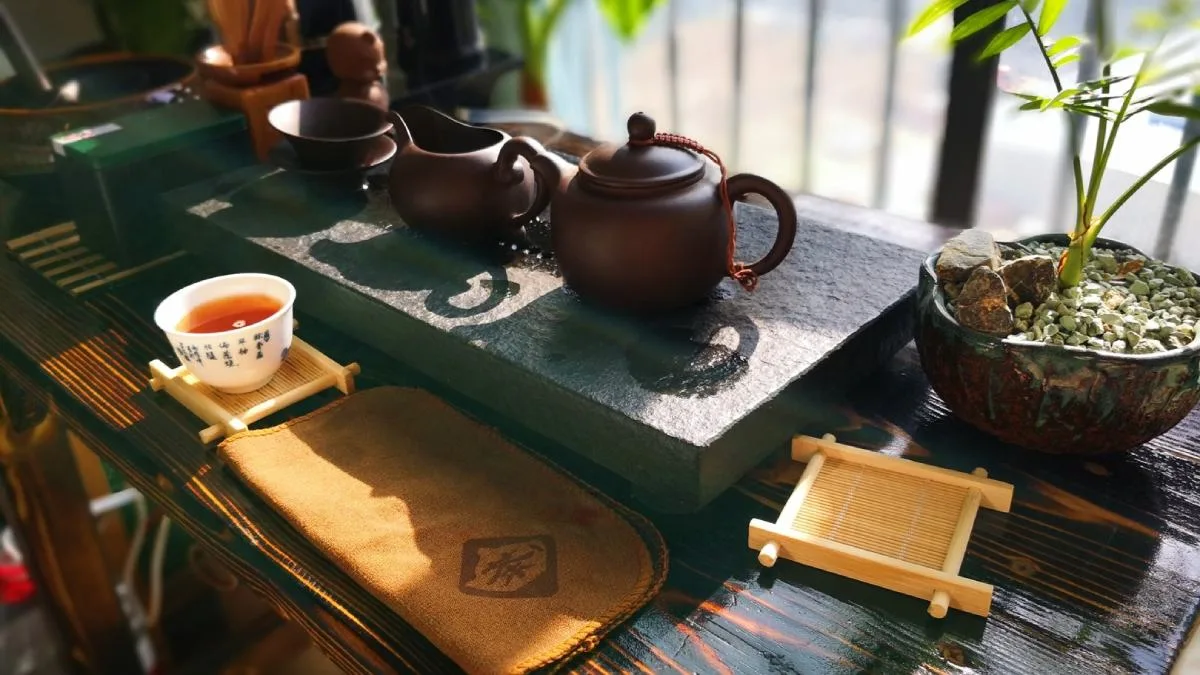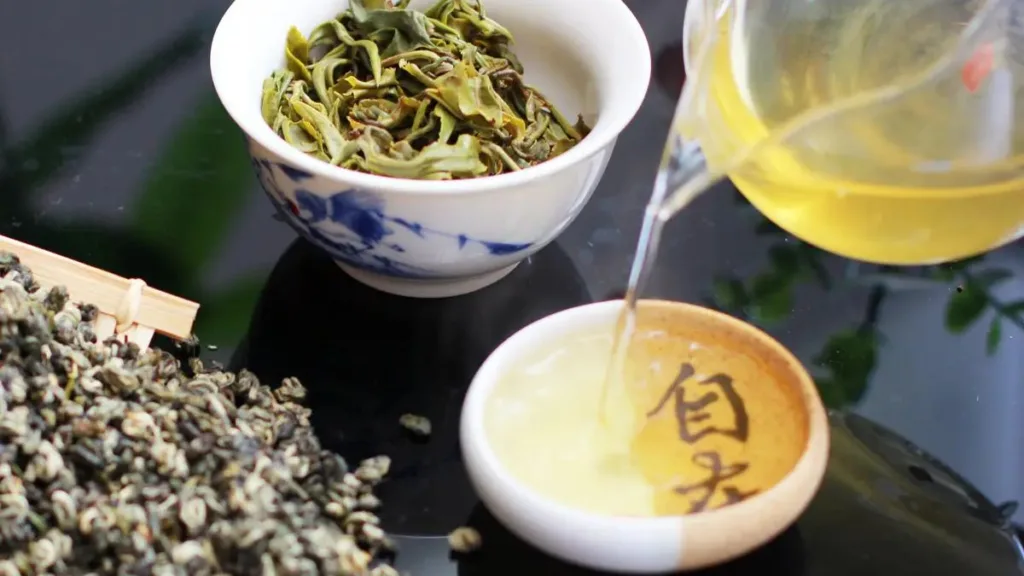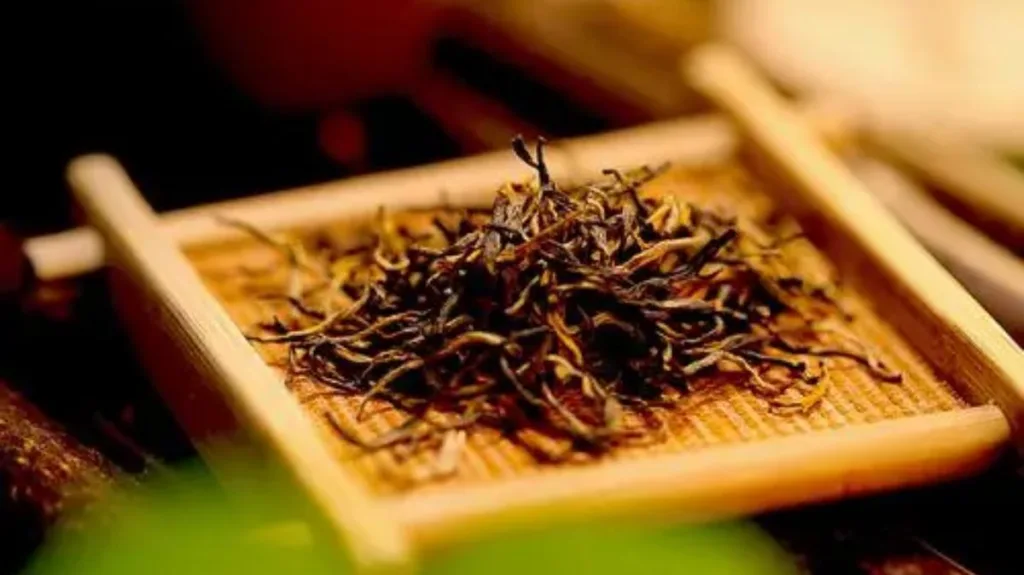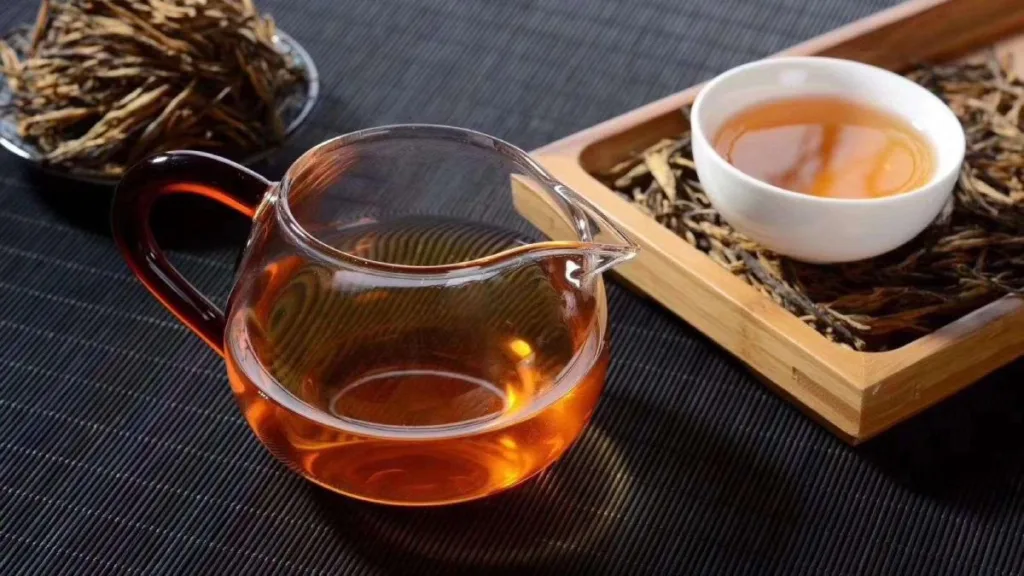When it comes to brewing Chinese green tea, many people wonder whether they should use pre-boiled water. The answer is yes, and the water temperature for brewing green tea should typically be around 70-80°C. Using water at this temperature range helps preserve the color, aroma, and flavor of the tea while preventing the destruction of essential components like vitamin C, caffeine, and tannins.
So, how should you go about boiling water and brewing Chinese green tea? Let’s dive into the details.
Brewing Green Tea
Chinese green tea focuses on producing a brew that’s delicate, bright green in color, and possesses a clean and refreshing aroma and taste. Among the six main categories of tea, brewing green tea may seem simple, but it requires attention to detail. Green tea is unfermented, and even a slight deviation in brewing can result in over-steeping, leading to a dull and lifeless tea with muted aromas and flavors. Additionally, since green tea comes in various shapes and forms, each with different leaf characteristics, tightness, and levels of freshness, the water temperature, brewing time, and methods can vary widely. Therefore, mastering the art of brewing green tea may require some practice.
(1) Water Quality
The quality of the water you use directly influences the quality of the tea infusion. The ancient Chinese saying goes, “Tea’s nature originates from water. When tea is eight parts and encounters ten parts of water, it is still ten parts tea. When tea is eight parts and meets eight parts of water, it is only eight parts tea.” In essence, it emphasizes the importance of good quality, clean, and fresh water for making great tea.
Most ancient tea texts talk extensively about water quality. They often mentioned “mountain water is best, river water is good, well water is the least desirable.” In essence, they sought water that was sweet and clean. From a scientific perspective, water hardness directly affects the color of tea infusion and the solubility of tea components. High water hardness can result in a yellowish-brown color and a milder flavor. Excessive hardness can even make the tea taste bitter. Poor-quality water not only fails to brew a good tea but also causes limescale buildup, potentially damaging your tea equipment. Therefore, for brewing tea, you should use soft water or temporarily hard water.
In general, spring water is the best choice, followed by clean river, stream, or well water, depending on the local water source. As for tap water, it’s advisable to use filtered water, particularly in areas with hard water. Given the potential pollution of rainwater and snow, it’s generally not recommended for drinking. Personally, I often use bottled mineral water for brewing tea. In China, brands like Nongfu Spring, known for their slightly sweet water, are popular choices. Tea houses also frequently use mineral water or distilled water, and in regions with abundant natural springs, water from the mountains, like Hangzhou’s Tiger Run Spring or the spring water from Baiyun Mountain in Guangzhou, can be used for tea preparation. For home use, water filtered with a water purifier is also acceptable.
(2) Water Temperature
Traditional Chinese tea preparation places great emphasis on water temperature, especially during the era of compressed tea cakes and bricks, where controlling the water temperature was a key factor in successful tea brewing. In general, you should boil the water with a strong, rapid boil until it produces large, rolling bubbles, indicating that it’s just about to boil. Water that is either too old (stale) or too young (overly boiling) should be avoided. Water temperature plays a significant role in dissolving the components of the tea leaves and influencing the flavor and aroma of the tea infusion.
The ideal water temperature for brewing green tea depends on the quality of the tea leaves. For high-quality green teas, especially delicate teas with tender buds and young leaves, a water temperature of around 80°C is recommended. The younger and fresher the tea leaves, the lower the water temperature you should use. Using water that’s too hot can easily overcook the tea leaves, leading to a yellowish infusion with a bitter taste. On the other hand, if the water temperature is too low, it results in a less aromatic brew. For mid-range and lower-quality green teas, you can use boiling water at 100°C for brewing. Using boiling water is appropriate for teas that are more tightly rolled and have older leaves. When the water temperature is lower, it doesn’t penetrate the tea leaves as well, resulting in a milder flavor.
However, it’s essential to note that when brewing high-quality green teas at around 80°C, you should heat the water to a boil first and then let it cool to the desired temperature. When using water that has already been treated for purification or sterilization, you can simply bring it to the required temperature without cooling.
(3) Tea Quantity
There is no strict standard for the quantity of tea leaves to be used in brewing green tea. The amount of tea you use depends on factors such as the size of your teapot or teacup, the type of green tea, and your personal preferences. As a general guideline, the tea-to-water ratio is typically around 1:50 to 1:60. For professional tea tasting, 3 grams of tea leaves are used to brew in 150ml of water.
The amount of tea leaves you use primarily affects the strength of the brew. This is a matter of personal preference. Beginners can experiment with different quantities to find the tea concentration that suits their taste.
(4) Teaware
For brewing green tea, you can choose from various types of teaware, such as glass cups or white porcelain covered bowls (gaiwans). Large porcelain cups and teapots are suitable for brewing mid-range and lower-quality green teas.
Glass cups are ideal for brewing premium green teas with tender young leaves, like West Lake Dragonwell, Biluochun, Junshan Yinzhen, etc. With glass cups, you can observe the tea leaves gently unfurl and dance in the water, offering a captivating display of the brewing process. For certain types of teas, such as Junshan Yinzhen, the tea buds initially rise to the surface, standing upright like tiny bamboo shoots before gracefully sinking, resembling a forest of golden spears. When brewing top-grade Junshan Yinzhen, the process may include “three rises and three falls,” creating a visually stunning experience. This is why many tea houses prefer to use glass cups for brewing green tea.
In ancient times, traditional gaiwan (lidded bowls) were commonly used. Compared to glass cups, gaiwans have better heat retention. For tightly rolled teas like Gunpowder and Meizhan, I personally prefer using a gaiwan. High-quality porcelain can beautifully accentuate the bright green color of the tea infusion, and gaiwans provide an elegant and tactile experience that glass cups cannot match. Additionally, because high-quality green tea should not be brewed with boiling water, and tea leaves tend to float on the water’s surface, it’s easy to consume tea leaves accidentally. Using a gaiwan allows you to push the tea leaves aside with the lid when drinking.
In summary, whether you choose glass cups or gaiwans, smaller sizes are preferred. Larger teaware results in more water, which can easily over-steep the tea leaves.
(5) Brewing Method
Brewing green tea is relatively simple compared to oolong or black teas. The procedure can be broken down into two general approaches, depending on the tightness of the tea leaves. However, regardless of the method you use, the first step involves warming the teapot or teacup, which is crucial for bringing out the color, aroma, and flavor of the tea.
(a) Tight, Dense Tea Leaves
For green teas with tightly rolled, heavy leaves, you can follow these steps:
- Warm your teapot or cup, then pour the water into it.
- Place the tea leaves in the vessel.
- Pour water into the vessel to about one-third of its capacity. At this stage, you should not cover the teapot or cup.
- After a short time, when the tea leaves start to absorb water, you’ll see the leaves gently unfurl and expand, revealing their true colors. The tea buds will resemble flags or spears rising and dancing in the water. The steam will carry the fragrant aroma upwards like clouds and mist. For example, with Biluochun, you may see tea leaves dancing like snowflakes, forming delicate clusters, looking as fresh and vibrant as spring flowers. The beauty of the tea leaves at this moment has been compared to “dyeing the sea floor with the colors of spring.”
- After a few minutes, when the tea cools to a pleasant drinking temperature (typically between 45-55°C), you can start enjoying your tea. This is considered one brewing. For professional tea tasting, a five-minute steeping time is the standard, with both the tea drinking temperature and the temperature for smelling the tea aroma falling within this range. If the temperature exceeds 60°C, it can scald your mouth and nose, while temperatures below 40°C result in a less fragrant aroma and a more astringent taste. The exact timing can be challenging to control, and you’ll need to rely on experience, so practice is crucial.
- If there’s still about a third of the tea infusion left in the teapot or cup after the first brewing, you can perform additional infusions. This is considered the second brewing. In the case of plump and vigorous tea leaves, the tea infusion in the second brewing is rich, and after drinking, you’ll notice sweetness on your tongue, accompanied by lingering fragrance. After the third infusion, the tea’s flavor generally becomes milder. This brewing method, except for Biluochun, is suitable for teas with tight and dense leaves, such as Zhu Cha, Mei Cha, Yuncha, etc.
(b) Loosely Unfurled Tea Leaves
For green teas with loosely unfurled tea leaves, you can follow these steps:
- After warming your teapot or cup, add the tea leaves.
- Pour water at an appropriate temperature into the teapot or cup, filling it to about one-third (or a bit less) of its capacity, ensuring that the tea leaves are covered. Be careful about how you pour the water; avoid pouring it directly onto the leaves with force. This can be too aggressive for some tender tea leaves. Instead, pour the water gently down the side of the teapot or cup.
- Wait for about two minutes, allowing the tea leaves to absorb water and start expanding. After this time, you can continue filling the teapot or cup with water to the top. Use the same gentle pouring method as before.
- The subsequent steps are the same as for the tightly rolled tea leaves.
This brewing method is suitable for teas like Lu’an Melon Seed, Huangshan Maofeng, Taiping Houkui, Shucheng Lan Hua, etc. Some teas fall between tightly rolled and loosely unfurled categories, and both methods can be suitable based on personal preference.
In conclusion, brewing Chinese green tea is an art that requires precision in terms of water quality, temperature, quantity of tea leaves, teaware selection, and brewing method. These factors come together to create a delightful tea-drinking experience. By mastering these aspects, you can unlock the full potential of your green tea, creating a perfect infusion with captivating color, aroma, and flavor that soothes your senses and nourishes your soul.



